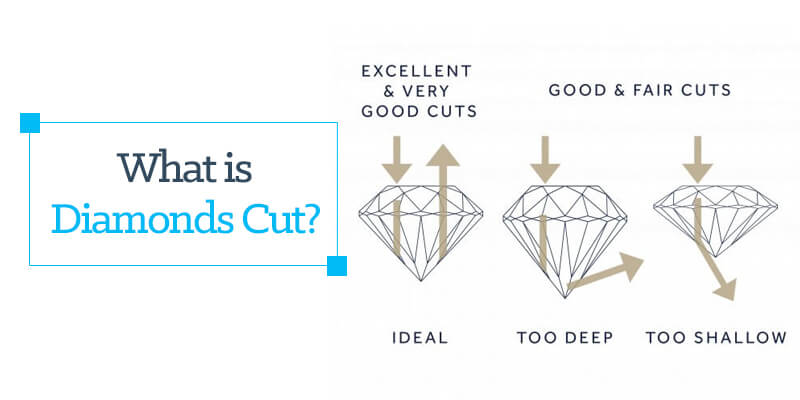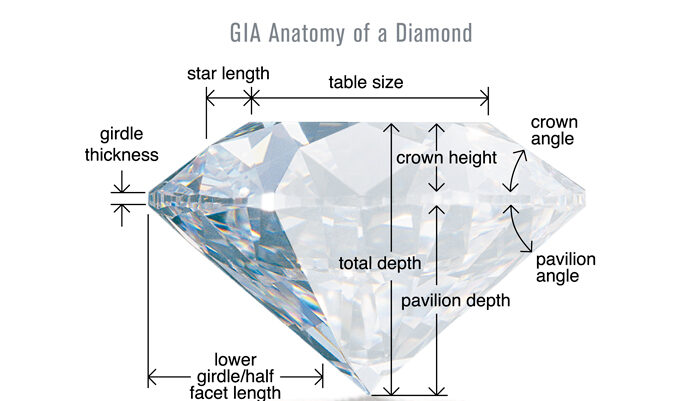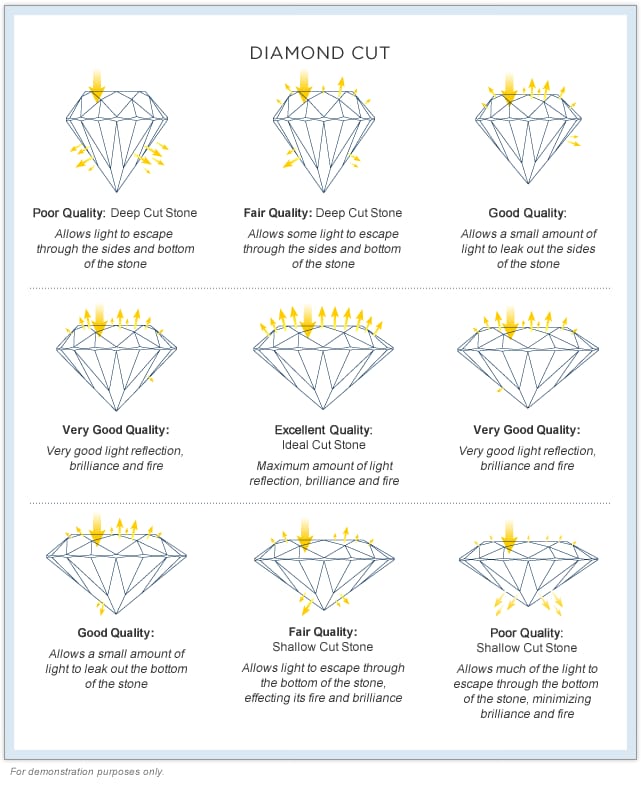
A diamond cut is a style or design guide used when shaping a diamond for polishing such as the brilliant cut. Cut does not refer to shape (pear, oval), but the symmetry, proportioning and polish of a diamond. The cut of a diamond greatly affects a diamond’s brilliance; this means if it is cut poorly, it will be less luminous. In order to best use a diamond gemstone’s material properties, a number of different diamond cuts have been developed. A diamond cut constitutes a more or less symmetrical arrangement of facets, which together modify the shape and appearance of a diamond crystal. Diamond cutters must consider several factors, such as the shape and size of the crystal, when choosing a cut. The practical history of diamond cuts can be traced back to the Middle Ages, while their theoretical basis was not developed until the turn of the 20th century. Design creation and innovation continue to the present day: new technology—notably laser cutting and computer-aided design—has enabled the development of cuts whose complexity, optical performance, and waste reduction were hitherto unthinkable. The most popular of diamond cuts is the modern round brilliant, whose facet arrangements and proportions have been perfected by both mathematical and empirical analysis.
Also popular are the fancy cuts, which come in a variety of shapes—many of which were derived from the round brilliant. A diamond’s cut is evaluated by trained graders, with higher grades given to stones whose symmetry and proportions most closely match the particular “ideal” used as a benchmark. The strictest standards are applied to the round brilliant; although its facet count is invariable, its proportions are not. Different countries base their cut grading on different ideals: one may speak of the American Standard or the Scandinavian Standard (Scan. D.N.), to give but two examples.
Diamond Cutting & Polishing Is An Art, Skill And Science Of Transforming A Rough Diamond Into A Brilliant Diamond.
‘Cut’ has two meanings in relation to diamonds. The first is the shape: round, oval and so on. The second relates to the specific quality of cut within the shape and the quality and price will vary very greatly based on the cut quality. Read more about at Wikipedia, the art of diamond cutting. Shape is the model or form of the diamond, such as round, oval, pear, princess and more.

The Cut Is The Most Important Element To Reflect Brilliance. The Sparkling Quality Of The Cut Is To Be Determined By 3 Separate Factors:
1. Proportions
2. Polish
3. Symmetry
Round Brilliant Diamond Measurements:
| PROPORTIONS | TOTAL DEPTH % | TABLE % | CROWN % | CROWN ANGLE ° | PAVILION % | PAVILION ANGLE ° |
|---|---|---|---|---|---|---|
| Excellent | 58.0 – 63.5 | 52.0 – 63.0 | 12.0 – 16.5 | 31.5 – 36.5 | 42.0 – 44.5 | 40.0° – 41.7° |
| Very Good | 55.0 – 65.5 | 52.0 – 66.0 | 10.0 – 17.5 | 28.5 – 38.0 | 41.5 – 45.0 | 39.7° – 42.3° |
| Good | 53.0 – 69.0 | 50.0 – 70.0 | 8.5 – 19.0 | 26.0 – 40.0 | 41.0 – 46.5 | 39.4° – 42.9° |
| Fair & poor | less than | less than | less than | less than | less than | less than |
Fancy Cut Diamond Measurements :
| Approximate ideal proportions for fancy shapes: Please note that there are no ideal proportions for fancy shapes: they are fancy! | ||
| SHAPE | IDEAL LENGTH | WIDTH |
|---|---|---|
| Excellent | 58.0 – 63.5 | 52.0 – 63.0 |
| Very Good | 55.0 – 65.5 | 52.0 – 66.0 |
| Good | 53.0 – 69.0 | 50.0 – 70.0 |
| Fair & poor | less than | less than |
| The depth percentage of an fancy cut diamond is generally determined by dividing the length to width ratios | ||
